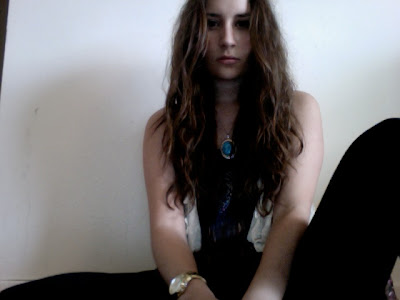Sunset:
This is a photograph I took heading back to my home town Owen Sound from Sauble Beach one day this summer. The original is fairly dull and grey and I wanted to make it warm and bright. I increased the exposure percentage to brighten the photo and lowered the contrast to make it less harsh. I then added more saturation and temperature to warm the photo. The saturation brightened the photograph and the temperature to add the yellow tint. I also added a light film grain to age the photograph, as well as cross process. All of these features combined gave the effect of a bright, warm, and aged photograph.
 |
| Before |
 |
| After |
Cigarette:
This is a photograph a friend of mine took while she was in France, I love it and wanted to share it with you. I love it for its simplicity and focus. The original was taken in black and white but I have manipulated it to have to effect of a warm, old, almost cinema look to it. I increased the exposer and the contrast on the photograph to bring out the details in the finger creases and the shadows. I also increased the saturation and the temperature to make it warmer, I then added a cinema filter to give it that old rustic feel.
 |
| Before |
 |
| After |
Alex:
This is a portrait I took of my friend Alex on a road trip to Montreal. The original is beautiful on its own, but I decided once again to make the photograph brighter. I find the when a photograph has warmth (depending on the photo and the context) it comes alive, even more so than in its original form (depending on the photo). Some photos are perfect in original film and shouldn’t be altered. To create this effect on the portrait of Alex I increased the contrast and the and lowered the exposure. I also increased the saturation and the temperature. I then added a cross process filter to give the photo that yellow and green tinge. With the combination of effects I used on this photo it brightened up and the details like the sun coming trough the back window, the reflection in her sunglasses, and the smoke in front of her face stand out more than they do in the original.
 |
| Before |
 |
| After |
Me:
This is a photograph of myself that a friend took of me. The original is dark and I find there is not enough light. To make the photo look like I did, I lowered the saturation, temperature, and the contrast. But I increased the exposure. Increasing the exposure on a camera opens the lens up to let light in, this brightened up my face so you could see my features. It also gave the photo a grey tint to it. Lowering the contrast also helped with brightening of the photograph because it took away the darkness from around my face. All of these effects make the photograph look bright and grey at the same time. It also looks like an old film photograph. I very much enjoy the look of old weathered film, I find it gives a photograph more depth and character which is why I decided to use this technique on all of my edited photographs.
 |
| Before |
 |
| After |